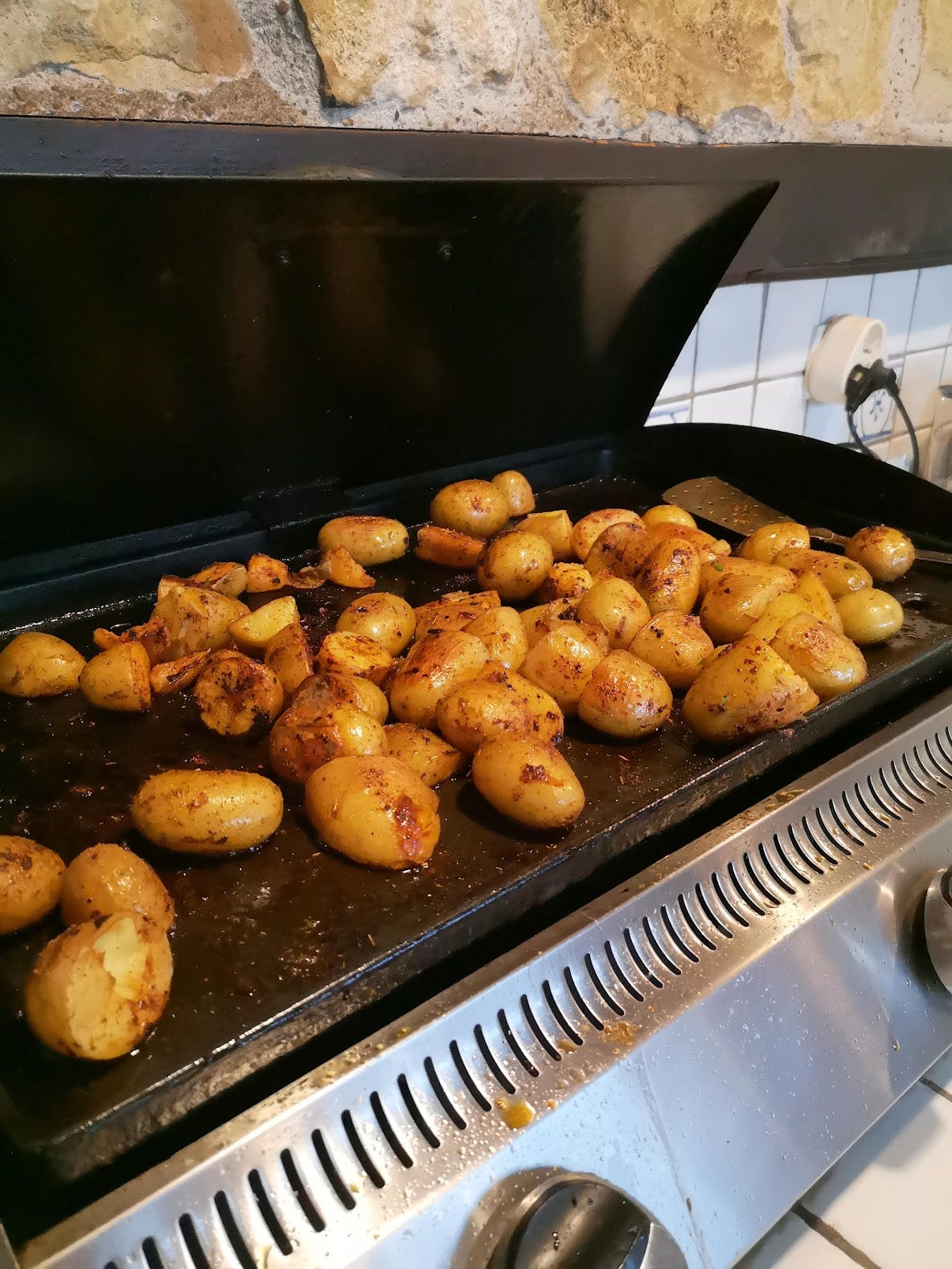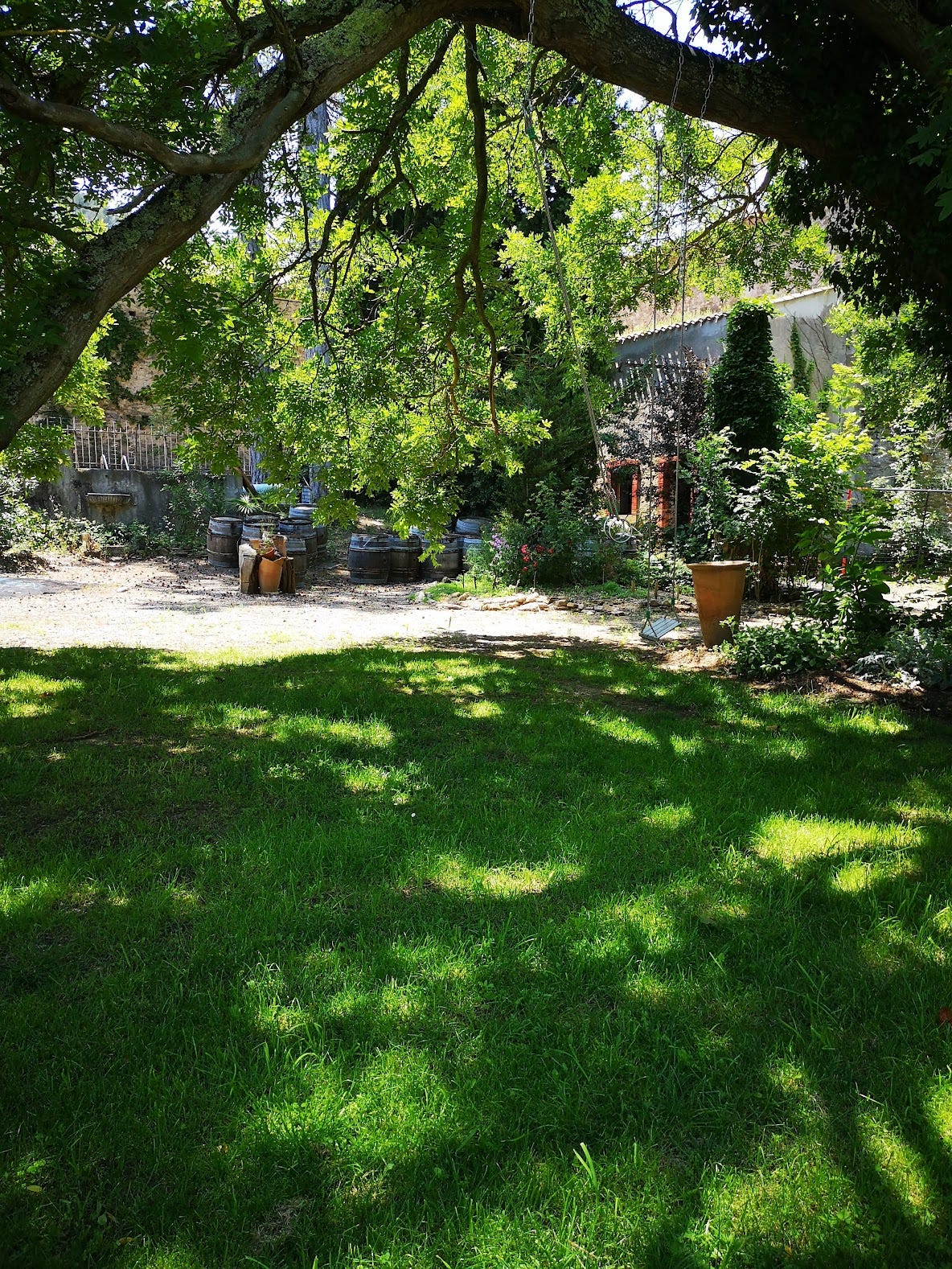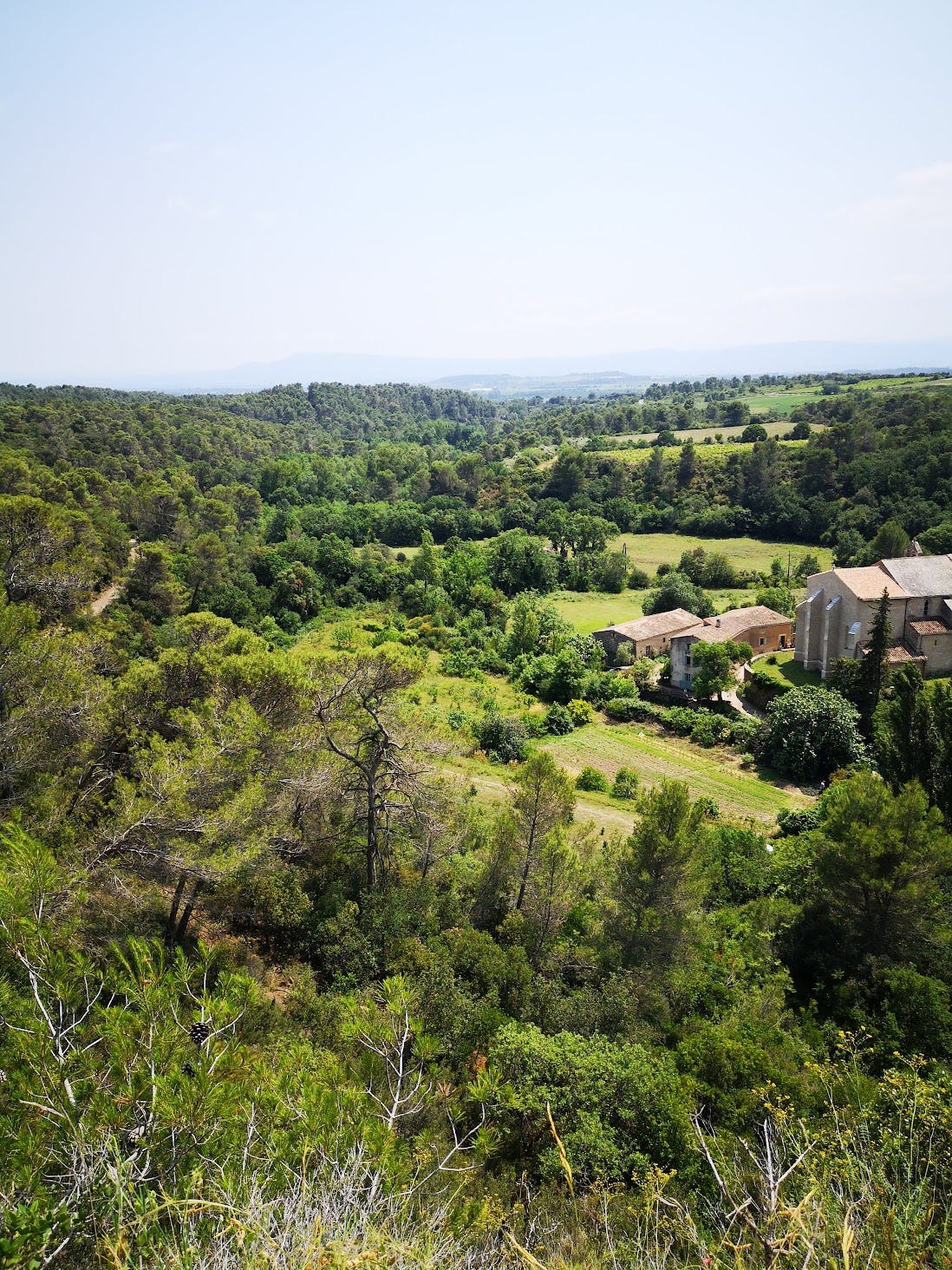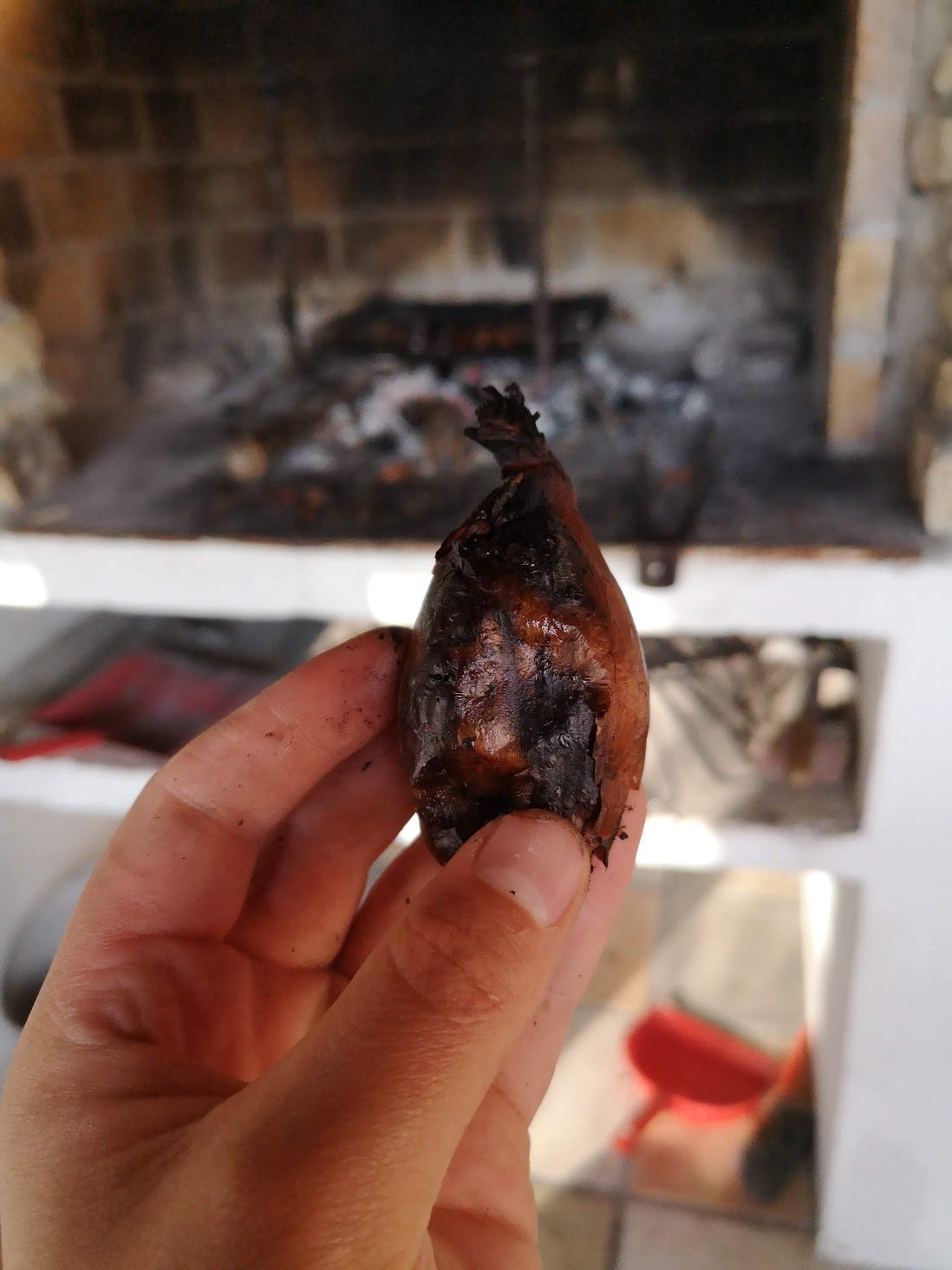Smoky shallots and my burning desire to become a French housewife
Dispatches from a recent holiday to Carcassonne with the out-laws
When I moved to Scotland from deepest, darkest Cornwall, I was introduced to so many new phrases I thought my wee heid might explode. One such phrase was a brand-spanking new unit of measurement: I was told that if something was close in proximity, it was just a ‘bawhair’ away. Never have I felt this unit of measurement so viscerally as when I’m describing how close I am to becoming a French housewife after spending a week on holiday in the south of France. A bawhair*, I tell you.
Full disclosure, however: this is not a novel thought. Since reading A Year in Provence by Peter Mahler in the long, covid-addled winter of 2021, the daydream of French domesticity has nestled peacefully in in the nether regions of my mind, to be dragged out and fondled when I’m doing boring things, like sitting in my tent snorting midge repellent and wishing the weather would behave itself. This recent holiday merely propelled French Housewifery to the front of my mind again, lodging it firmly between my eyes and occluding all other realistic thoughts about money and Brexit.
But back to the idyllic niceness, because that’s what we’re all here for.
The house we stayed in was near Carcassonne, and came with a huge garden, complete with chickens which had to be fed twice a day - good practice for my future life, even if they didn’t speak English. The chooks gave us a lot of eggs, which was nice of them, and we fed them all sorts of tasty morsels in return. The garden also had quince trees, almond trees, pear trees, plum trees and cherry trees, plus an assortment of tomatoes and beans growing in the vegetable patch. There was a swimming pool too but you didn’t have to feed it, only clean it with a pool hoover robot that I nicknamed Soggy Henry.
The pièce de résistance of the house, though, was its huge, partially covered outdoor kitchen and dining area, which - with two fingers up to the perfectly serviceable indoor one - we ended up using exclusively. It had all the usual stuff: a dishwasher, gas hob, toaster, and sink but also came with one of those cool grill-hotplate things (a George Foremonsieur) and best of all, a wood-fired barbecue area, complete with a brick-built chimney. I cooked using both of these toys nearly everyday, using old vine stumps as fuel for the fire. Tres authentique, non?

The grill was great, but cooking over fire just pips it for me in terms of enjoyment. Rarely is the opportunity to do so presented to me, given that I live in a suburban one-bed flat without any outdoor space, and lighting open fires anywhere other than below the tideline in Scotland is dangerous and unnecessary. So when I do find somewhere with a designated fire pit, plus lovely tasty things to put on it, it’s like Freeborn catnip. I obsess over it, my body tingling with possibilities. What, I ask myself, fingers sticky and black from tearing into charred peppers, steak and courgettes, can I burn next? The answer, it turns out, is alliums - that’s stuff like onions, garlic, leeks and shallots to you non-foodies who are only here because I bullied you into signing up.
The Catalonians know this. Every year, as winter melts into spring, they hold festivals in honour of burning calçots, a vegetable which could be described either as a massive spring onion or a small, tender leek but is its own sort of thing all together. They blacken and char the outside of these calçots over a barbecue, then peel off those first few layers to reveal sweet, smoky flesh, which they dip into romesco sauce and eat using their fingers, which turn dark grey from all the ash. It sounds joyous, if you ask me, so although this was mid-June, rather than March, and we were in the Languedoc rather than Catalonia, I attempted this with some giant spring onions we bought at the market. They were delicious, of course, but later on I discovered that an even better thing to burn on a barbecue while not in calçot season, is a shallot.
Shallots, you see, come wrapped in their very own paper. And paper, when it burns, creates a lovely, woody aroma, and protects the layers within better, I think, than the softer flesh of a spring onion, or leek. Additionally, shallots are more related to garlic than they are to onions, as this award-winning food writer found out recently , meaning that the flesh is sweeter, more floral and more aromatic than plain old boring onions. They’re also a cute size to pop on a barbecue most of the time, and you needn’t do very much to them at all when they’re done; just peel them, salt them and dress with a little oil and vinegar.
Here’s how you burn a bunch of shallots on a barbecue if you need some more details:
Light a fire in an appropriate space using wood or lump charcoal as fuel. For guidance on this, build a ouija board and have a chat with your neolithic ancestors.
Once your fire is built, you have to wait for the flames to die down which will take a while, so drink some wine if you can. Flames indicate that the fire isn’t hot enough to cook on just yet - you’ve got to wait patiently for the embers to glow red hot, and be covered a little in a layer of ash, for the vibes.
When your barbecue is emebering, as a verb, find yourself a grill or an old oven shelf and place it directly over the charcoal. This is optional; you can just bung the shallots right in, but I lose them in the hot ashes if I do that because I’ll have drunk too much wine to keep track of them while waiting for the fire to go emebery, now repackaged as an adjective.
Pop your shallots on the grill and leave them for about 6-7 minutes on each side. You’ll want them to go proper dark on the outside - none of this golden brown nonsense because then the middle won’t cook and they won’t taste smoky and that’d be sad.
When they’re looking very dark, hoik them off and leave them to cool slightly for 10 minutes or so, before getting your fingers involved and removing the blackened skins, popping the whole, peeled shallots into a serving bowl. They should be soft, slippery and fragrant, like a freshly showered worm. Don’t worry about the odd fleck of burnt papery outsides getting in - that’s extra flavour. Dress your shallots with a skoosh of good olive oil, some scrunchy salt and a splash of red wine or sherry vinegar and serve alongside something else you have barbecued for funsies.
Have fun, and if anyone fancies starting a commune in the Langeudoc, please do let me know.
(Also, for more escapism and south-of-France musings, you HAVE to read Debora Robertson’s newsletter. She moved into an amazing house near Marseille and in her newsletter, walks us through all her market hauls, what she’s cooking and how she’s getting on with renovating her wonderful new home. It’s a balm for the midge-bitten soul. )
*I’m sure you can work out what a bawhair is, by the way. Drop me a message if not, and I’ll happily enlighten you.







SOGGY HENRY. Heheheheheehehehe
https://writteninmykitchen.com - From one trainee French housewife to another, that was a lovely read - thanks. Incidentally, most proper French housewives are rubbish cooks!